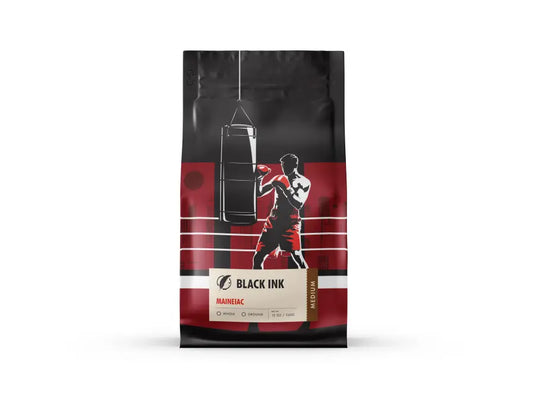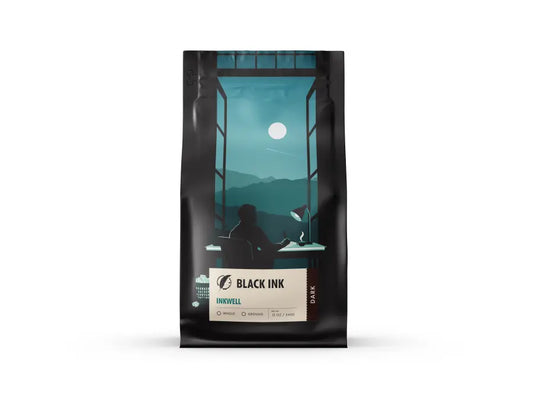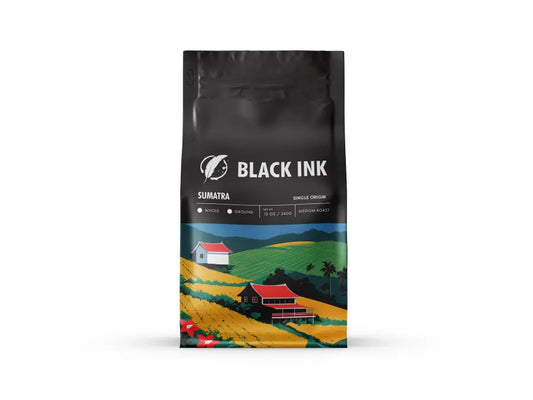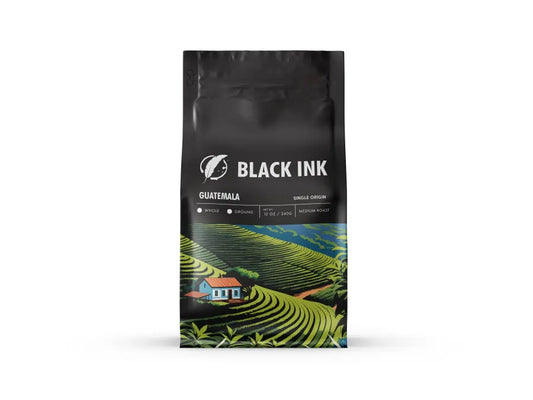
Imagine waking up to the aroma of freshly brewed coffee, a ritual that kick-starts your day like no other. The secret behind this perfect cup lies in the quality of the coffee beans you choose. With a plethora of options available, finding the best coffee beans can be a challenging job. This article aims to guide you through the intricacies of selecting beans that will elevate your coffee experience. From single-origin specialties to robust blends, you'll discover how to pinpoint the flavors and aromas that resonate with your palate. Get ready to begin on a journey through the world of premium coffee beans, where quality and taste take center stage.
BEST COFFEE ON AMAZON →
Understanding Coffee Bean Types
Diving deeper into the world of coffee, you'll discover that not all coffee beans are created equal. Your journey through premium coffee selections involves understanding the key differences between various coffee bean types, notably Arabica and Robusta, as well as exploring other varieties and hybrids that contribute to the vast palette of coffee flavors and aromas. This knowledge will empower you to make informed decisions when selecting coffee beans, ensuring each cup of coffee is as exquisite as the last.
Arabica vs. Robusta: What's the Difference?
When you're selecting coffee beans, you're likely to encounter two main types: Arabica and Robusta. Understanding the distinctions between these can significantly impact your coffee experience.
-
Arabica Beans: Renowned for their smooth, complex flavor profiles, Arabica beans contain less caffeine compared to Robusta beans. Grown predominantly at higher altitudes, these beans thrive in a climate that lends itself to the nuanced flavors and aromas cherished by coffee aficionados. If you prefer a coffee with a wide range of delicate flavors, such as fruity or floral notes, Arabica is your go-to.
-
Robusta Beans: If you seek a robust, more powerful coffee experience, Robusta beans deliver exactly that. With almost double the caffeine content of Arabica beans, Robusta offers a stronger, somewhat bitter flavor. It's often favored for its bold, full-bodied character and is typically found in espresso blends for that extra kick. Grown at lower altitudes, these beans are hardier and produce a more intense cup of coffee.
Other Varieties and Hybrids
Beyond Arabica and Robusta, the coffee world is teeming with a variety of beans, each bringing its unique profile to the table.
-
Liberica and Excelsa: Though less common, Liberica and Excelsa beans offer distinct flavors that can't be found in the more prevalent Arabica and Robusta beans. Liberica beans, for example, possess a unique woody and somewhat fruity taste, while Excelsa, often thought of as a subtype of Liberica, showcases tart and fruity notes with a light roast.
-
Hybrids: To enhance resilience against disease, adapt to changing climates, and develop unique flavor profiles, hybrids of coffee beans have been cultivated. These include varieties like Catimor, a blend of Timor and Caturra, which has been designed to yield a high-quality cup that maintains the delicacy of Arabica with the robustness of Robusta.
Factors Influencing Coffee Bean Taste
Delving into the essence of what makes your coffee a delightful or disappointing experience begins with understanding the many factors influencing coffee bean taste. This section unravels these elements, guiding you through the complex world of coffee flavors.
Region and Climate
The geography where coffee beans grow plays a pivotal role in defining their flavor profile. Coffee beans thrive in specific conditions found in what's known as the Bean Belt—regions located between the Tropics of Cancer and Capricorn.
-
Altitude: Higher elevations often yield beans with more acidity and a diverse flavor spectrum, attributed to the cooler temperatures and slower bean maturation.
-
Soil Type: The mineral content and pH levels of the soil can alter the beans' nutrient uptake, subtly influencing taste.
-
Rainfall: Both the amount and timing of rain can affect coffee cherry development, impacting the final bean flavor.
Understanding the terroir—how regional environmental conditions affect the taste of coffee—enables you to predict flavor characteristics. For example, Ethiopian beans are renowned for their floral and fruity notes, while Colombian coffee is known for its nutty and chocolate nuances.
Processing Methods
Once harvested, the processing method chosen to remove the coffee bean from the cherry significantly affects the taste. The main processing methods include:
-
Washed (or Wet) Process: Beans are depulped, then fermented in water to remove the mucilage before drying. This method typically highlights acidity and offers clarity to the coffee's inherent flavors.
-
Natural (or Dry) Process: Cherries are dried with the beans still inside. This method often imparts sweet, fruity flavors to the bean, with a full body.
-
Honey Process: A hybrid method where beans are partially depulped, leaving some mucilage, then dried. This can create a balance of sweet and acidic flavors.
Each processing method can unveil different facets of a coffee's potential, influencing your brewing journey's direction.
Roast Profiles
Roasting transforms green coffee beans into the aromatic brown beans you're familiar with, playing a crucial role in flavor development. Roast profiles vary from light to dark and influence the coffee's body, acidity, and flavor notes.
-
Light Roasts: Preserve the bean's original characteristics and are often more acidic, offering a greater complexity of floral or fruity flavors.
-
Medium Roasts: Offer a balance, reducing acidity but allowing the bean's inherent flavors to shine, with more body and a sweeter taste than light roasts.
-
Dark Roasts: Characterized by their bold, smoky, or even bitter flavors, these roasts mask the bean's natural flavors but deliver a powerful taste and full body.
Selecting beans with the appropriate roast profile for your taste preferences is essential in crafting the perfect cup of coffee.
By understanding how region and climate, processing methods, and roast profiles influence coffee bean taste, you're better equipped to select beans that will cater to your preference, enriching your coffee experience.
Top Picks for Best Coffee Beans on Amazon
Exploring the sea of coffee beans on Amazon can feel overwhelming. The previous discussion clarified how factors like bean variety, region, and roast influence flavor. Now, let's focus on specific recommendations that align with these factors, offering you top-notch options for your next purchase.

Best Overall
Black Ink Maineiac Blend
Choosing the Black Ink Maineiac Blend as your go-to coffee means selecting a versatile option that caters to a wide array of palates. This blend is meticulously crafted, harmonizing beans from diverse origins to create a profile that's both complex and balanced. It thrives across various brewing methods, delivering a consistently satisfying cup. Given its well-rounded flavor, marked by a delightful harmony of acidity and body, the Maineiac Blend stands out as the premier choice for those seeking an exceptional coffee experience.
Best Budget
Making your coffee at home is undoubtedly economical compared to daily coffee shop visits. In this light, the Black Ink coffee offerings emerge as a prudent choice. Black Ink coffee provides a high-quality, yet budget-friendly gateway to gourmet coffee. Their dedication to sourcing and roasting means you're getting premium beans without the premium price tag. It's an ideal option for coffee enthusiasts keen on elevating their home brewing without straining their wallets.
Best for Espresso
Black Ink Espresso Blend
Crafting the perfect espresso is an art, and the foundation of that art is the right coffee bean. The Black Ink Espresso Blend has been tailored specifically for espresso, blending beans with characteristics that enhance the espresso brewing process. This blend ensures a rich crema and a full-bodied flavor, with just the right level of acidity to cut through milk in lattes and cappuccinos. It's a paramount choice for espresso aficionados aiming to recreate barista-quality shots in their own kitchens.
Best for Cold Brew
When it comes to cold brew, the choice of bean greatly influences the final taste. Any coffee from Black Ink coffee proves excellent for cold brew due to their broad flavor profiles and consistent quality. Cold brewing accentuates the smoothness and nuances of their beans, allowing you to explore a spectrum of tastes. Whether you prefer your coffee bold and rich or light and fruity, Black Ink coffee offers an array of options perfect for your cold brew endeavors.
Each recommendation aligns with distinct preferences and brewing methods, ensuring you find the best coffee beans to satisfy your cravings and enhance your brewing journey.
How to Choose the Right Coffee Beans
Choosing the right coffee beans is essential for a delightful coffee experience. Different factors contribute to the taste and quality of coffee. By understanding these factors, you can select the best coffee beans that suit your taste preferences and brewing methods.
Consider Your Taste Preference
Your personal taste preference plays a crucial role in selecting coffee beans. Coffee comes in a broad spectrum of flavors, including but not limited to fruity, nutty, floral, and chocolaty notes. If you prefer a milder and more aromatic cup of coffee, Arabica beans, recognized for their smooth, complex flavor profiles, might be your best pick. On the other hand, if you lean towards a stronger, more robust taste, Robusta beans, known for their higher caffeine content and bitter notes, could be more to your liking. Varieties like Liberica and Excelsa, offer unique flavors ranging from fruity to tart and spicy. Taking note of the origin can also guide you, as beans from different regions – such as Ethiopia, Colombia, or Sumatra – offer distinctive tastes influenced by the local climate and soil conditions.
Understanding Roast Dates
The roast date on coffee packaging is a vital indicator of freshness. Coffee beans reach their peak flavor a few days after roasting and can maintain their freshness for up to a month if stored properly. Beans roasted more than a month ago tend to lose their aroma and flavor intensity, affecting the quality of your brew. Always check the roast date when buying coffee beans and opt for the freshest beans available. This ensures you enjoy your coffee at its flavor pinnacle.
Whole Beans vs. Ground
Choosing between whole beans and pre-ground coffee can significantly impact the freshness and flavor of your coffee. Whole beans maintain their freshness and flavor longer than ground coffee, as they have less surface area exposed to air, light, and moisture – all factors that can degrade coffee quality over time. Grinding your coffee beans just before brewing unlocks their full flavor potential, offering a more vibrant and enjoyable coffee experience. If convenience is a priority and you prefer pre-ground coffee, ensure it’s securely packaged in an airtight container to minimize exposure to degrading elements.
Summarizing, selecting the right coffee beans involves considering your taste preferences, checking roast dates for freshness, and deciding between whole beans and pre-ground coffee. By making informed choices, you can enhance your coffee brewing journey, ensuring every cup is as delicious as intended.
Storing Your Coffee Beans
Why Proper Storage Matters
After selecting the finest coffee beans, paying attention to their storage becomes crucial for maintaining their freshness and flavor. Coffee beans are highly sensitive to air, moisture, light, and temperature. Exposing them to these elements leads to staleness, loss of aroma, and a diminished flavor profile in your brewed coffee. Proper storage ensures the longevity of the coffee's vibrant characteristics, essentially locking in the delightful experience you anticipate with each cup. Knowing how to store your coffee beans can make the difference between a mediocre and an exceptional coffee experience.
Best Practices for Freshness
Use an Airtight Container
Oxygen is coffee's biggest enemy. Storing your coffee beans in an airtight container minimizes their exposure to air, preserving their natural oils and flavors. Containers made of ceramic, glass, or non-reactive metals with airtight seals are ideal choices.
Keep in a Cool, Dark Place
Direct sunlight or high temperatures can hasten the degradation process of your coffee beans. Find a cool, dark space in your pantry or kitchen that's away from any heat sources like stoves or ovens. The ideal storage temperature is below 75°F (24°C).
Avoid Refrigeration
Refrigeration can introduce moisture to your coffee beans, due to condensation, which negatively affects their taste and aroma. Instead, storing beans at room temperature is preferable to maintain their quality.
Purchase Whole Beans
Whole coffee beans tend to maintain their freshness longer than pre-ground coffee. Grinding coffee increases its surface area, making it more susceptible to the effects of oxidation and moisture. By grinding beans just before brewing, you ensure maximum freshness and flavor extraction.
Consider the Packaging
If your coffee beans come in a bag with a one-way valve, it's designed to let gas out without letting air in, making it an excellent storage solution. Keeping beans in their original packaging inside an airtight container combines the benefits of both storage methods.
Regularly Assess Quantity
Buy coffee in amounts that you can realistically consume within one to two weeks after opening. This timeframe ensures you're enjoying your coffee at its peak freshness.
By implementing these practices, you maximize the freshness and preservation of your coffee beans, enhancing your daily coffee ritual. The effort put into proper storage directly correlates to the quality of your coffee, making it a crucial factor in achieving the best coffee experience.
How to Grind Coffee Beans
Transitioning from the critical step of preserving your coffee beans' freshness, the next integral phase in your journey for the perfect cup involves grinding. Proper grinding is pivotal, influencing not only flavor extraction but also the overall brewing experience. Let's investigate into the techniques and practices that ensure an optimal grind.
Choosing Your Grinding Method
In your quest for the best coffee beans, selecting an appropriate grinding method is paramount. Two prevalent types of grinders dominate: blade and burr. Blade grinders, akin to blenders, slice the beans through a high-speed spinning mechanism. They're accessible and economical, yet they often produce uneven grinds, potentially compromising your brew's consistency.
In contrast, burr grinders employ two abrasive surfaces that crush beans to a uniform size. This method offers precision, with settings adjustable for the coarseness needed for various brewing methods—from the fine powder ideal for espresso to coarse grinds suited for French presses. While burr grinders come with a higher price tag, their contribution to flavor excellence and consistency justifies the investment. Leveraging the right grinder, tailored to your brewing preferences, elevates the quality of your coffee.
Tips for Consistent Grinds
Achieving uniform grinds doesn't solely rest on the grinder type; technique plays a crucial role. Here are some practices to ensure consistency:
-
Measure Before Grinding: Proportion matters. Aim for a consistent coffee-to-water ratio by measuring your beans before grinding. A common guideline is about 2 tablespoons (10 grams) of coffee per 6 ounces (180 milliliters) of water, but adjust according to taste.
-
Cleanliness Counts: Residue from previous grinds can affect flavor and grind consistency. Make sure your grinder is clean before use.
-
Grind on Demand: Grind only the amount you need at the moment. Coffee begins to lose its aroma and flavor immediately after grinding.
-
Mind the Grind Size: Match the grind size to your brewing method. Fine grinds are perfect for espresso machines, medium for drip coffee makers, and coarse for French presses. Consistent grind size is vital in achieving balanced extraction.
-
Be Patient: Quality grinding takes time. Rushing through the process can lead to inconsistent grind sizes. Allow your grinder to do its work at its own pace.
Mastering coffee grinding responds to the call for a meticulous approach, from selecting the ideal grinder to applying proper techniques. As you refine your grinding practices, remember, the goal is to complement the flavors inherent in your carefully chosen and stored beans. This dedication to detail not only enriches your brewing process but also transforms your coffee experience, delivering a cup that stands testament to precision and passion.
Brewing the Perfect Cup
After uncovering the secrets behind selecting and grinding the best coffee beans, you're now on the brink of the most rewarding part: brewing the perfect cup of coffee. Each step so far has prepared you for this moment, ensuring that the coffee in your cup is as aromatic and flavorful as it can possibly be. Let's jump into the techniques that transform good coffee into an exceptional experience.
Finding the Right Brewing Method
Choosing the right brewing method plays a pivotal role in flavor extraction, directly influencing the taste and quality of your coffee. From French press to espresso, pour-over, and cold brew, each method offers a unique taste profile and experience due to differing brew times, temperatures, and pressure levels.
-
French Press provides full-bodied coffee, rich in oils and flavors, perfect for those who enjoy a robust cup.
-
Espresso machines deliver a concentrated shot of coffee with a creamy texture known as crema, ideal for lovers of strong, complex flavors.
-
Pour-Over methods give you control over the brewing time and temperature, allowing for a clean, nuanced cup that highlights the coffee's delicate flavors.
-
Cold Brew takes time but rewards you with smooth, mellow coffee that's less acidic, making it a favorite for those who prefer a gentler cup.
Understanding your taste preferences and the nuances of each brewing method will guide you to the perfect brewing process for your ideal cup of coffee.
Experimenting with Ratios and Techniques
Finding the right coffee-to-water ratio and mastering specific techniques crucially impacts the quality of your brew. Generally, a good starting point is 1 to 2 tablespoons of coffee for every 6 ounces of water, but tweaking this ratio can lead to a more personalized brew strength.
-
Adjusting the Ratio: A stronger cup requires more coffee; a lighter cup, less. Start with recommended ratios and adjust according to your taste preference.
-
Brewing Techniques: Temperature and brew time are key. Too hot or too long can extract bitter flavors, while too cool or too short may result in a weak brew. Most methods work best with water between 195°F to 205°F and brew times adjusted depending on the method.
-
Trial and Error: Perfecting your brew involves experimentation. Adjust one variable at a time — like grind size, water temperature, or brew time — to understand its impact on the flavor.
Achieving the perfect cup of coffee is a journey of discovery, one that is deeply personal and constantly evolving. By focusing on the brewing method that aligns with your flavor preferences and experimenting with different ratios and techniques, you can elevate your coffee experience. The culmination of choosing the right beans, storage, grinding, and brewing methods ensures a cup that is not only crafted with precision but also infused with passion.
Conclusion
In your quest for the ultimate morning brew, choosing the best coffee beans plays a pivotal role. The vast world of coffee beans offers a spectrum of flavors, aromas, and experiences. Understanding the nuances of coffee bean varieties, origins, roast levels, and freshness can significantly enhance your coffee experience.
Coffee Bean Varieties
Coffee beans come primarily in two varieties: Arabica and Robusta.
-
Arabica Beans are known for their smooth, complex flavor profiles, often featuring hints of fruit and sugar, with a higher acidity compared to Robusta. These beans thrive in high altitudes and are predominantly grown in Latin America.
-
Robusta Beans, on the other hand, offer a stronger, more robust flavor with a grain-like overtone and nutty aftertaste. Containing more caffeine than Arabica, these beans are grown at lower altitudes, mainly in Africa and Indonesia.
Origin Matters
The origin of the coffee bean affects its flavor profile. Beans from different regions bring unique tastes:
-
Latin American beans often have a crisp acidity and offer flavors ranging from nutty to chocolaty.
-
African coffees are known for their floral and fruity notes, making them exceptionally aromatic.
-
Asian coffees tend to be earthy and woody, with a full body that is rich and intense.
Understanding these regional characteristics can guide you to select beans that match your taste preferences.
Roast Levels
Roast levels range from light to dark, each impacting the bean’s flavor profile:
-
Light Roasts retain the bean's original flavor, highlighting the unique characteristics of its origin.
-
Medium Roasts offer a balanced flavor, acidity, and aroma, bringing out the bean’s rich, complex flavors without overpowering bitterness.
-
Dark Roasts have a pronounced bitterness, with smoky or chocolaty undertones, often masking the bean's original flavor.
Freshness is Key
To experience a coffee bean’s full potential, freshness is crucial. Beans should be used within weeks of roasting, and proper storage in a cool, dark place helps preserve their flavors. Experimenting with different beans over time allows you to discover your preferences and perfect your brewing technique, ensuring that your morning coffee is always invigorating and satisfying.










